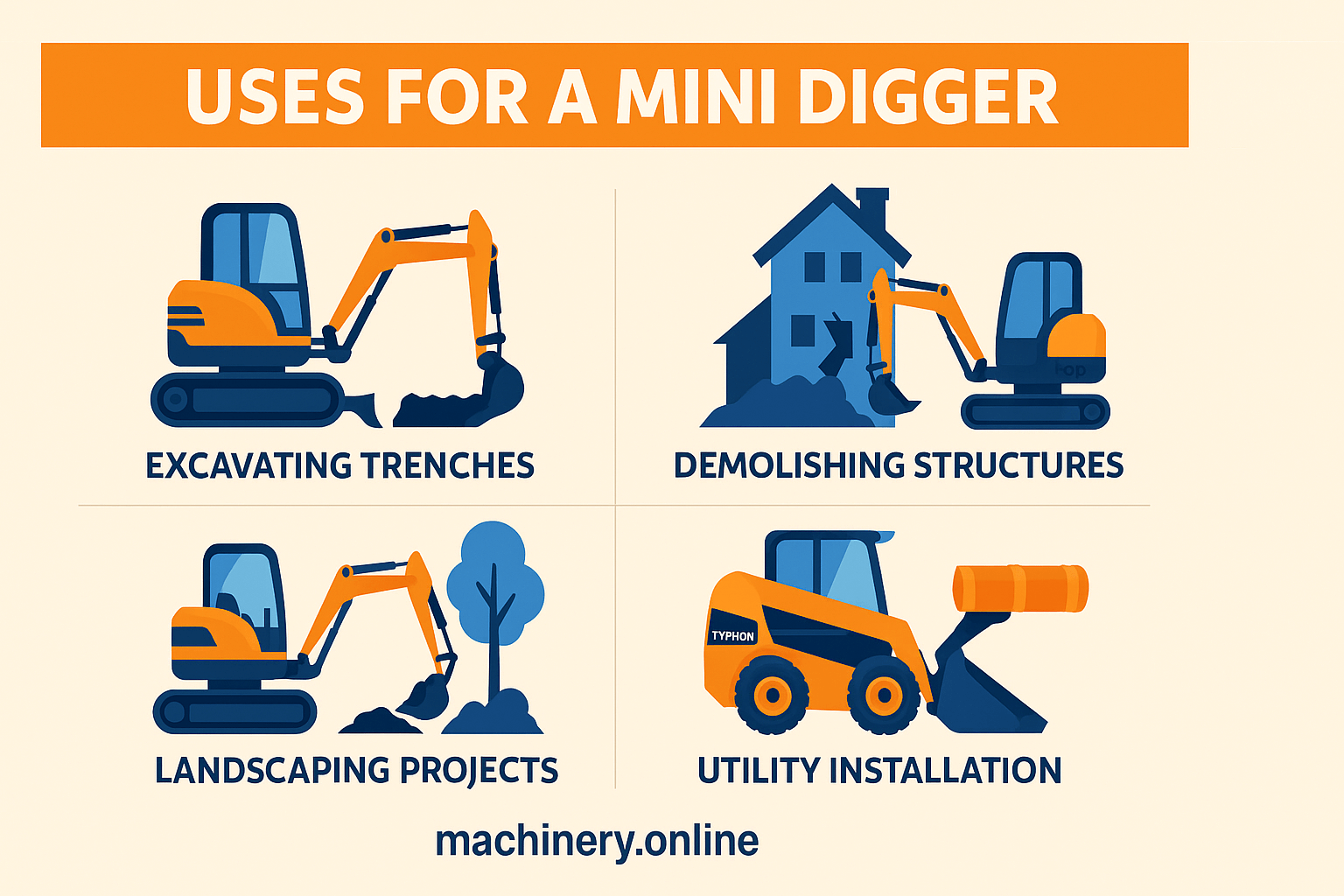
Backhoe Vs Excavator: Which One to Choose for Construction?
The construction sector significantly boosts a country’s GDP and gross capital creation, offering numerous investment opportunities in related industries. Among heavy construction equipment, excavators and backhoe loaders stand out as essential tools. While both machines can perform a variety of tasks, understanding their differences is crucial when choosing the right equipment for a job site.
What Is the Difference Between a Backhoe and an Excavator?
Though backhoes and excavators share many similarities, they differ in three key areas: size, range of rotation, and versatility. These differences affect the suitability of each machine for specific tasks.
1. Size
The primary difference between excavators and backhoes is size. Backhoes are generally smaller and lighter than excavators, making them more maneuverable. Despite their smaller size, backhoes are suitable for various tasks, including:
- Framing
- Medium-scale construction
- Medium-scale excavation
- Loading
- Snow removal
2. Range of Rotation
Backhoes have a limited range of motion compared to excavators. While excavators can rotate 360 degrees, backhoes can typically only rotate the loader arm by about 200 degrees. This distinction is significant for operators, as the full rotation capability of excavators saves time by eliminating the need to reposition the machine frequently.
3. Versatility
Both excavators and backhoes are highly adaptable, capable of being equipped with a wide range of attachments. However, backhoes offer a broader selection of attachments, making them versatile for various tasks. A backhoe loader combines the functions of a loader and an excavator, featuring a backhoe machine on the rear and a shovel or bucket in the front.
4. Mobility
Backhoes offer the advantage of mobility, as they are wheeled vehicles that can travel up to 25 miles per hour on public highways. This mobility is particularly beneficial when relocating between job sites.
Backhoe vs. Excavator: Which Is Right for Your Job?
Selecting the appropriate machine for your project depends on several factors, including size, strength, and mobility. Here are some considerations:
- Project Size: For large-scale construction, excavation, or demolition projects that require substantial mechanical power, an excavator is likely the better choice. For medium-scale projects, a backhoe may be more suitable.
- Strength Requirements: Excavators are more powerful than backhoes, making them ideal for demanding tasks such as heavy-duty digging and demolition. For smaller projects, a mini excavator or backhoe may suffice.
- Mobility Needs: If your project spans multiple locations, a backhoe’s mobility allows it to move around the site more easily.
Some jobs can be completed with either a backhoe or an excavator, while others require a specific type of equipment. Consider the specific tasks and attachments your project will require to ensure you select the appropriate machine.
Learn More: 11 things to consider when buying a skid steer loader
Applications of Excavators Over Backhoe Loaders
Excavators
Excavators are essential for most construction projects due to their versatility and strength. Known as diggers, hydraulic excavators are used for various tasks, including material handling, river dredging, demolition, landscaping, and building. Unlike backhoes, an excavator’s entire cab can rotate 360 degrees atop its undercarriage, allowing for greater flexibility. Most wheeled and mini excavators also feature a dozer blade opposite the digging arm.
Excavators can be equipped with numerous attachments, enabling them to perform tasks beyond simple digging, such as heavy-duty drilling and demolition. In forestry operations, excavators are often used with attachments for cutting brush.
You can use a hydraulic excavator for heavy-duty, industrial jobs, including:
- Demolition projects
- Drilling shafts
- Rock blasting
- Driving piles
- Mining
Backhoe Loaders
A backhoe loader is a versatile construction machine combining a tractor-like unit with a backhoe on the rear and a shovel or bucket on the front. It can perform a wide range of tasks, with the operator’s seat rotating 360 degrees to face the active side. The dipper or arm supports the bucket, while the boom connects the backhoe arm to the tractor. Backhoes offer various attachments, including brooms, plows, and forklifts. They can even function as cranes by crossing the straps of a hoisted object over the dipper stick.
Backhoes are lighter, more flexible, and better suited for tasks such as:
- Medium-scale construction
- Medium-scale excavation
- Snow removal
- Loading
Learn More: Proper Excavator Maintenance for Optimal Performance and Longevity
Conclusion
Both backhoe loaders and excavators are indispensable in the construction industry, each with unique advantages and suitable applications. Understanding the differences in size, rotation range, versatility, and mobility will help you choose the right equipment for your specific project needs. Whether you require the power of an excavator for large-scale tasks or the maneuverability and versatility of a backhoe for medium-scale projects, selecting the appropriate machine will ensure efficiency and effectiveness on the job site.










